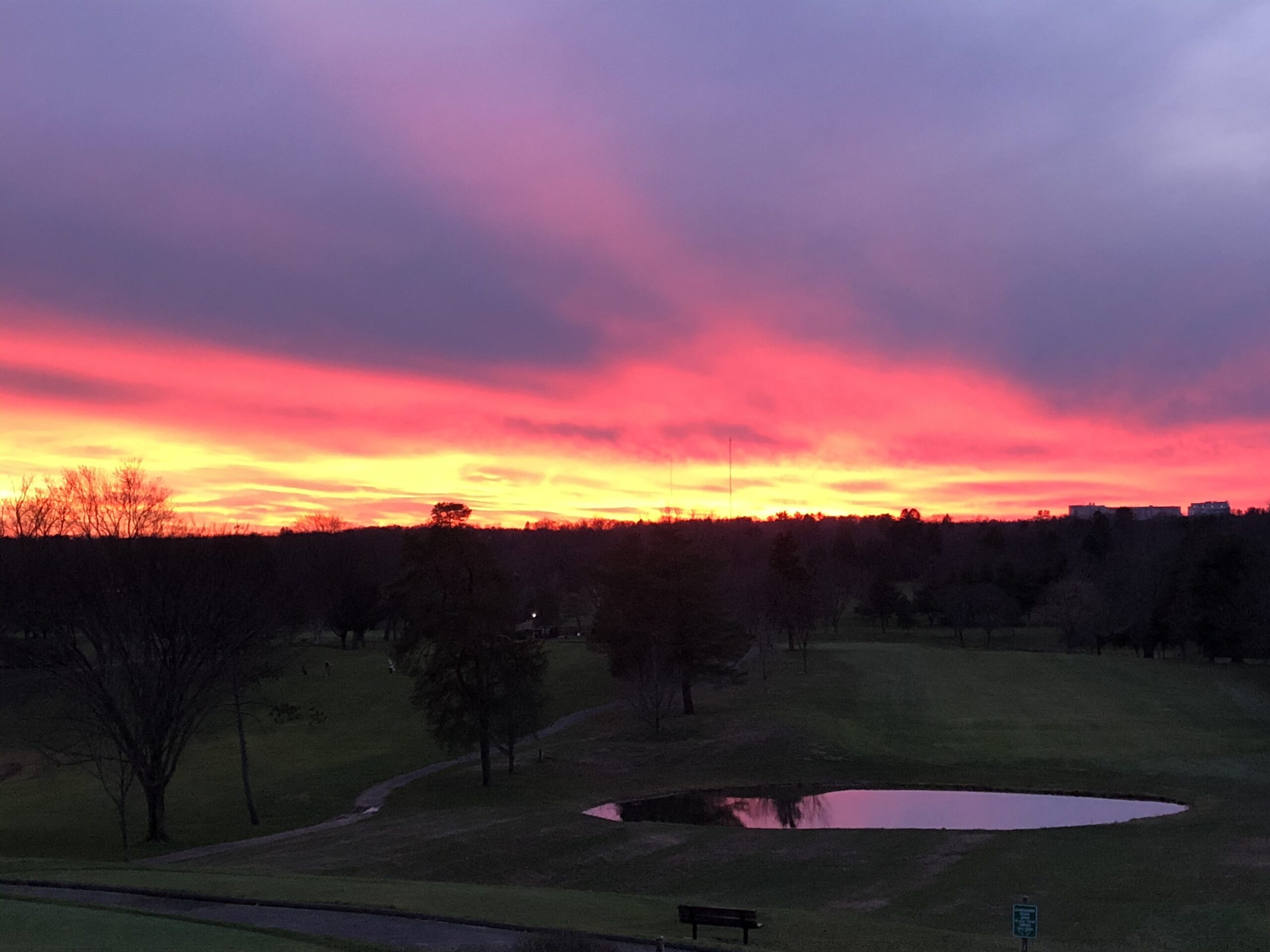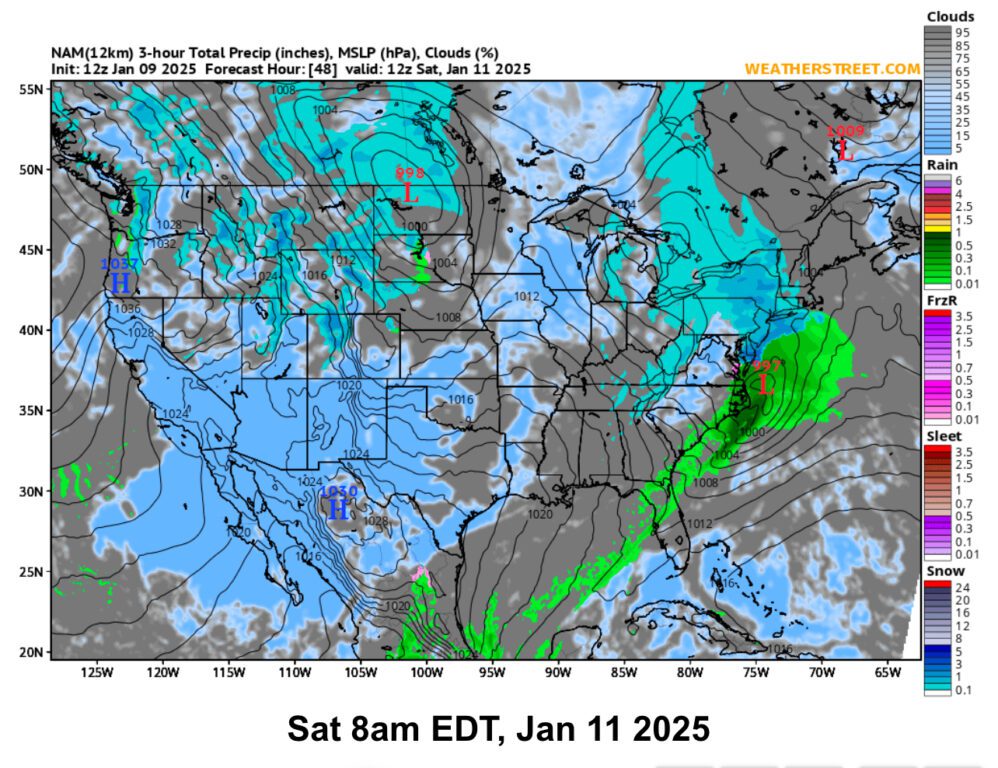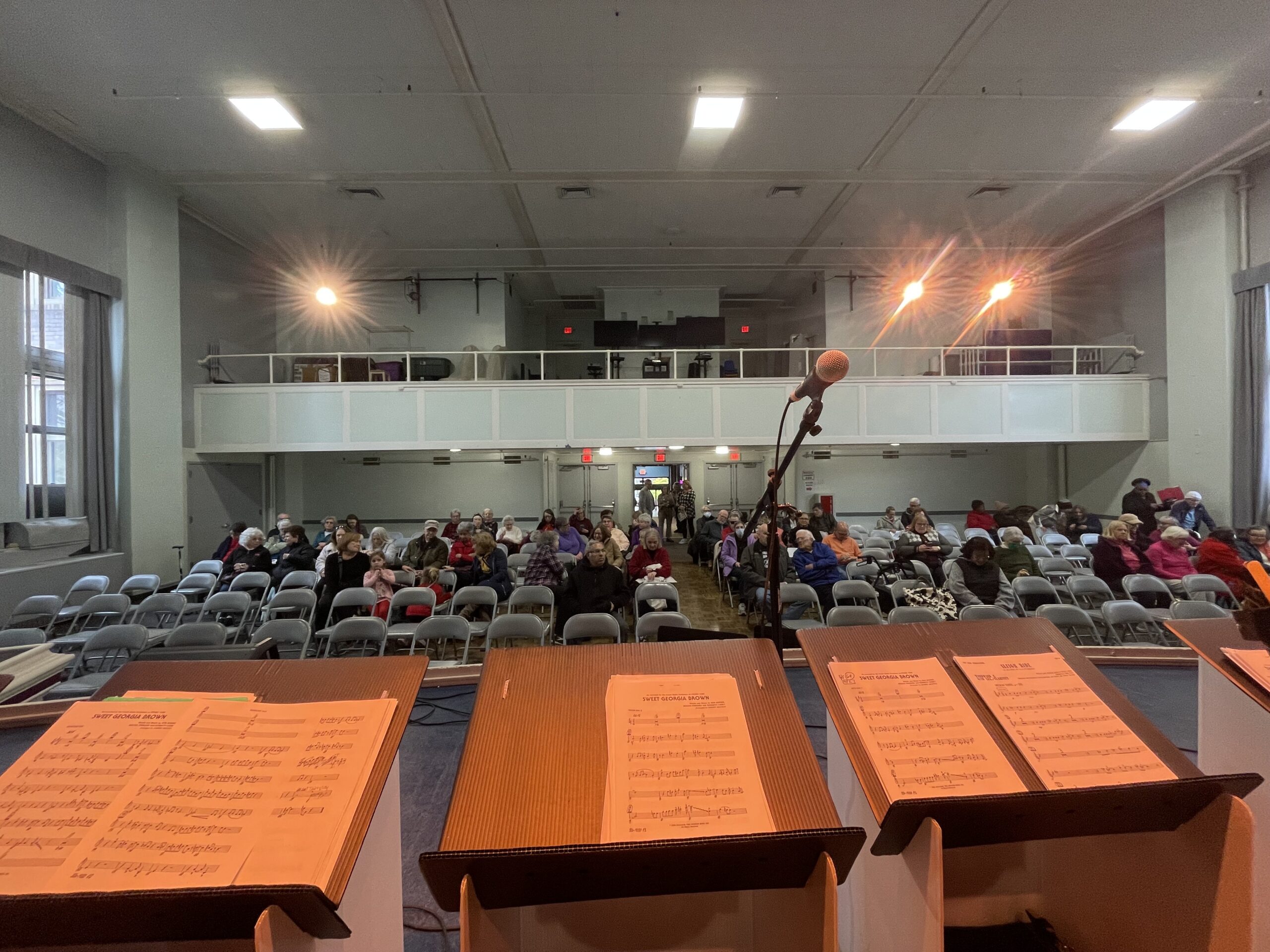All Politics Is Local: Does Anybody Really Know What Time It Is?

Audio By Carbonatix

Sunset over Rockledge Golf Course in West Hartford, at 4:35 p.m. on Dec. 13. Photo credit: Ronni Newton
‘All Politics is Local’ is an opinion column written by John Lyons, a member of West Hartford’s Democratic Town Committee.
By John Lyons
Each month I examine national issues and offer my thoughts on how West Hartford (and we as residents) are impacted. You’ll be surprised at how much seemingly small, or out-of-sight issues have a big impact on all of us.
OK, so perhaps this month, it is not so much of an “out of sight” issue as the subject of today’s column is literally “daylight.”
There is a push from President-elect Trump for the ending of daylight saving time. I chose my words very carefully in that last sentence as that has been the talking point I’ve seen him use. Ending daylight saving time would mean earlier sunsets year-round and earlier sunrises year-round. I should point out that I am pretty convinced he meant to say he wishes to eliminate standard time which, for us, is the time between early November and early March that the clocks are set back an hour. Mistaking daylight saving time and standard time is an age-old tradition that scores of people, professionals and amateurs alike, make time and time (ahem) again. More on this later.

Note that this weather map for Jan. 11, 2025 indicates Eastern Daylight Time (EDT), which is the summer time. Courtesy of John Lyons
Before I get into the nuts and bolts of the proposal, let’s talk a little bit of history and the origins of daylight saving time (DST).
DST’s origins go back to the post-revolutionary war era when Benjamin Franklin is thought to have proposed it thinking it would offer a savings on candles. There was also a belief that farmers could have more daylight hours in which to work the fields. All likely made sense given the technology and the era.
Germany would introduce it in an effort to save energy during World War I and the USA would follow suit later near the end of that war. In World War II, Roosevelt reintroduced it calling it “War Time.” President Lynden Baynes Johnson then signed into law the Uniform Time Act of 1966 which created DST starting the last weekend of April and ending the last weekend of October.
Clearly, no one involved with writing the legislation bothered to look at a sunrise and sunset calendars as sunset in late October is prior to 5 p.m. and sunset in early April is 6:30 p.m. (assuming standard time for both). That also meant that sunrise was prior to 5 a.m. until the clocks were set forward an hour.
That imbalance was fixed during George W Bush’s administration in 2007 with DST being set to end the first weekend in November and begin again the first Sunday in March respectively.
One significant and dubious historical note: During the second Nixon administration and the height of the first oil embargo in the winter of 1973-1974, Nixon signed a law making DST permanent. As a kid who hated it being dark at 5 o’clock for 75 days each year, I was thrilled. For the parents of kids injured (and killed) due to waiting in the darkness at 8 a.m. for the school bus and not being seen by drivers, the result was far less joyful. Public outrage resulted in the law being amended one year later.
One of the things I see most often is people making mistakes with respect to standard or daylight time. In mid-August, an organization will promote an event as starting at “8:00 PM EST” thinking it sounds “official” but mistaking the time of year we are in. I’ve seen lay people, officials, governments, and businesses make this mistake. I suppose short of making a mistake when it involves a moon mission or some other critical function, it is harmless, but it is a very common mistake, nonetheless.
During and since the 2024 election, Trump often talked and posted about “eliminating daylight saving time.” Even this NBC News piece (see YouTube link) seemed to conflate the two before clarifying a bit toward the end of the report. Is the law going to change to be on full-time DST (summer hours) or full-time standard time (winter hours)?
If DST were to be eliminated, that would mean we would have 90 days a year of sunsets much earlier than 5 p.m. here in Connecticut and sunrise much earlier than 5 a.m. for the same 90 days each summer. The winner in this scenario will be the blackout shade companies.
If standard time were to be eliminated, we would have sunsets later than 8 p.m. for 90 days a year, as we do now. But sunrise would be past 8 a.m. in West Hartford for over 60 days. Nearly all of the school buses pick up earlier than that.
Herein lies the problem with going all DST: Kids’ safety.
Most involved in this new effort do not remember Nixon’s initiative in 1973. They also don’t remember scores of kids hit by cars in total darkness while they waited for the school bus. There are other factors to consider: How much safer are roads for walking today in terms of engineering, lighting, and design? Does car technology today have the programming for accident avoidance with pedestrians (especially small ones)?
This is a complicated problem in which elimination of standard or daylight saving time is likely not a long-term answer. I think elimination of standard time will result in a swift backlash if we see a repeat of what happened in 1973. Elimination of DST, while not creating a safety hazard that I am aware of, will result in what I think are ridiculously early sunrises for a quarter of the year and darkness for West Hartford at 8 p.m. in June through August (the latest sunset would be 7:29 p.m.).
I am not sure what will happen and perhaps Trump’s desire to annex Canada, Greenland, and the Panama Canal along with renaming the Gulf of Mexico will distract from this initiative. I do hope he has the right experts in the room if and when this bill is crafted. It’s not as easy as it sounds.
I’ll see you next month.
The views expressed represent the opinion of John Lyons, and are not intended to represent the opinion of We-Ha.com or the West Hartford Democratic Town Committee.
Like what you see here? Click here to subscribe to We-Ha’s newsletter so you’ll always be in the know about what’s happening in West Hartford! Click the blue button below to become a supporter of We-Ha.com and our efforts to continue producing quality journalism.



